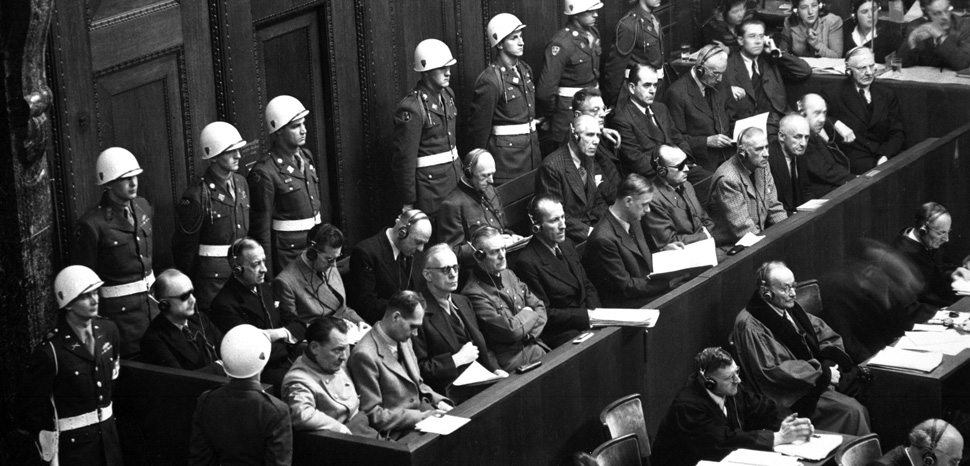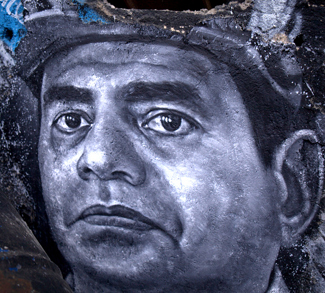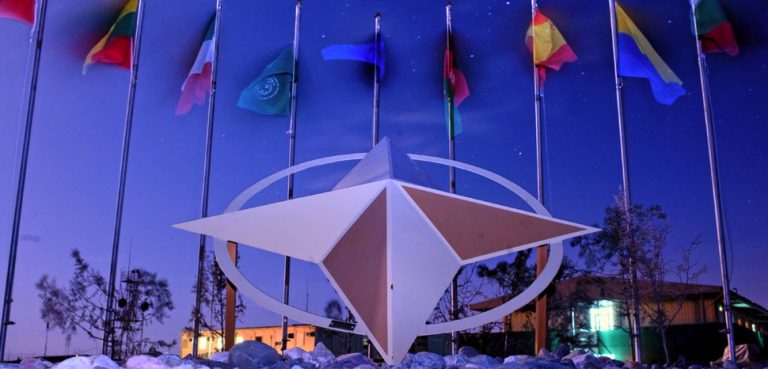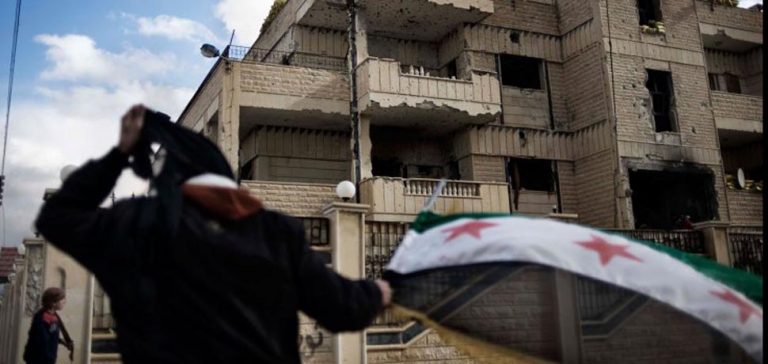Noam Chomsky once said, “For the powerful, crimes are those that others commit.” This was not the case for Germany and Japan post-World War II. The victorious Allied powers established the first international criminal tribunals to prosecute political and military officials for war crimes and other atrocities committed during wartime. The four major Allied governments – the United States, the United Kingdom, France, and the Soviet Union – set up the International Military Tribunal (Nuremberg trials) in Nuremberg, Germany, to prosecute and punish the major war criminals of the European Axis.
The tribunal presided over a combined trial of senior Nazi political and military leaders, as well as several Nazi organizations. The less-recognized International Military Tribunal for the Far East was created (Tokyo trials) in Tokyo, Japan, following the 1946 proclamation by Supreme Commander for the Allied Powers, U.S. Army General Douglas MacArthur. The tribunal presided over a series of trials of senior Japanese political and military leaders to prosecute and punish Far Eastern war criminals. The Nuremberg and Tokyo trials differed in several important aspects including their origins, compositions, and jurisdictions.
The Allied powers established the policy that international tribunals in Europe and in the Far East after World War II would focus on, most importantly, a decision on individual criminal liability for crimes against peace. The Allied governments, and specifically the United States, sought after this policy as a solid step toward organizing an international legal system for discouraging future aggressors and averting the sort of war devastation that the Axis aggression had caused. This US-enlivened policy, first presented at Nuremberg, was repeated and pursued precisely at Tokyo. Luc Reydams and Jan Wouters argued that “The Nuremberg and Tokyo Charters were drafted by a handful of statesmen from the highest echelons of government for whom an international tribunal was not a goal unto itself, but a means to a very specific end.” The Tokyo Charter necessitated that the principal charges against the defendants be crimes against peace while deeming charges on war crimes and crimes against humanity as discretionary. Therefore, a great part of the court battles at Tokyo rotated around substantiating aggressive war charges, despite the fact that proof of Japanese wartime atrocities was, truth be told, likewise exhibited.
In June 1945, the day of the signing of the United Nations Charter at the San Francisco Conference, delegations of the United States, the United Kingdom, France, and the Soviet Union, negotiated in London on regulating principles for prosecuting war criminals. It is noteworthy that the respective heads of these delegations – Robert Jackson, David Maxwell Fyfe, General I.T. Nikitchenko, and Robert Falco – later served in notable roles at the International Military Tribunal. Meeting in Potsdam to discuss the future of Germany and Europe, Truman, Churchill, and Stalin affirmed the London talks.
In August 1945, the four major Allied governments signed the 1945 London Agreement, which established the International Military Tribunal. The Charter of the International Military Tribunal was adjoined to the London Agreement and defined the tribunal’s constitution, functions, and jurisdiction. One judge from each of the Allied governments formed the Nuremberg tribunal; the Allied powers also supplied a team of prosecutors. The Nuremberg Charter provided that the International Military Tribunal had the authority to prosecute and punish persons who committed any of the following crimes: Crimes Against Peace (planning and making war), War Crimes (responsibility for crimes during war), Crimes Against Humanity (racial persecution), and Conspiracy to Commit other Crimes.
The tribunal held its opening session in the Palace of Justice in Nuremberg, and the trials lasted from November 1945 to October 1946. Twenty-two Nazi political and military leaders were indicted, including Hermann Goering, Rudolph Hess, Joachim von Ribbentrop, Alfred Rosenberg, and Albert Speer. The tribunal found nineteen individual defendants guilty and sentenced them to punishments that ranged from death by hanging to fifteen years of imprisonment. Three defendants were found not guilty, one committed suicide before the trial, and one did not stand trial due to physical or mental illness.
Unlike the International Military Tribunal, the International Military Tribunal for the Far East was not created by an international agreement, but it nonetheless emerged from international agreements to prosecute Japanese war criminals. In July 1945, the United States, the United Kingdom, and China signed the Potsdam Declaration, in which they stated that “We do not intend that the Japanese shall be enslaved as a race or destroyed as a nation, but stern justice shall be meted out to all war criminals, including those who have visited cruelties upon our prisoners. The Japanese Government shall remove all obstacles to the revival and strengthening of democratic tendencies among the Japanese people. Freedom of speech, of religion, and of thought, as well as respect for the fundamental human rights shall be established.” They further urged the Japanese government to, “proclaim now the unconditional surrender of all Japanese armed forces, and to provide proper and adequate assurances of their good faith in such action.” The war in Europe had ended but the war with Japan was continuing at the time the Potsdam Declaration was signed. Nonetheless, the Potsdam Declaration was not signed by the Soviet Union because it did not declare war on Japan until the United States dropped the second atomic bomb on the city of Nagasaki.
Japan surrendered on the 14th of August 1945, six days later. Officials of the US State Department leaned toward holding an intergovernmental conference to establish special international tribunals, but the State-War-Navy Coordinating Committee came up with the plan to rely on the power of the Supreme Commander of the Allied Powers, General Douglas MacArthur, mindful of the experience with the London Conference where Justice Robert Jackson had enormous difficulty coming to an agreement with other delegations on the Nuremberg Charter.
At the following Moscow Conference, held in December 1945, the United States, the United Kingdom, and the Soviet Union with affirmation from China agreed to a basic structure to occupy Japan. General MacArthur was granted authority to “issue all orders for the implementation of the Terms of Surrender, the occupation and control of Japan, and all directives supplementary thereto.”
In January 1946, General Douglas MacArthur issued a special proclamation to establish the International Military Tribunal for the Far East. The Charter for the International Military Tribunal for the Far East was adjoined to the proclamation. Similar to the Nuremberg Charter, it outlined the composition, functions, and jurisdiction of the tribunal. The Charter provided for General Douglas MacArthur to assign judges to the International Military Tribunal for the Far East from the countries that had signed Japan’s instrument of surrender: Australia, Canada, China, France, the Netherlands, the Soviet Union, the United Kingdom, and the United States, as well as British India and the Philippines. Each of these countries also had a team of prosecutors. As with the International Military Tribunal, the International Military Tribunal for the Far East had jurisdiction to prosecute individuals for Crimes Against Peace, War Crimes, and Crimes Against Humanity. However, the International Military Tribunal for the Far East had jurisdiction over crimes that occurred over a greater period of time, from the Japanese invasion of Manchuria in 1931 to Japan’s surrender in 1945.
The International Military Tribunal for the Far East oversaw the prosecution of twenty-five Japanese political and military leaders. The Emperor of Japan Hirohito and other members of the imperial family were not indicted. In fact, the Allied governments allowed Emperor Hirohito to retain his position on the throne, albeit with diminished status. The trials took place from May 1946 to November 1948. The International Military Tribunal for the Far East found all defendants guilty and sentenced them to punishments ranging from death to seven years’ imprisonment.
The Nuremberg and Tokyo trials contributed significantly to the development of international criminal law and served as models for a new series of international criminal tribunals that were established in the 1990s. Moreover, the reference to “crimes against peace,” “war crimes,” and “crimes against humanity” in the International Military Tribunal Charter represented the first time these terms were used and defined in an international instrument. These terms and definitions were also adopted in the Charter of the International Military Tribunal for the Far East, and have been depicted and expanded in a succession of international legal instruments since that time. The conclusions of the Nuremberg trials also served as models for the Genocide Convention 1948, the Universal Declaration of Human Rights 1948 and paved the way for the establishment of the International Criminal Court.
In conclusion, the Nuremberg and Tokyo trials legacy itself is extraordinary, and its importance is hard to overstate. Nuremberg and the international community’s experience with the ad hoc tribunals demonstrate that international justice doesn’t have to be perfect to be good. Holding up Nuremberg to an impossible, imagined standard is neither fair nor productive.
We cannot forget that the Nuremberg and Tokyo trials and, fifty years later, the establishment of the International Criminal Court aimed to safeguard peace in all regions of the world. The achievements of these great trials in elevating justice and law over inhumanity and war give promise for a better tomorrow by paving the way to deal with international crimes. Furthermore, the international system has made huge contributions to the birth and development of modern international law.
The views expressed in this article belongs to the author alone and does not necessarily reflect those of any institutions with which the author is associated with or Geopoliticalmonitor.com.




